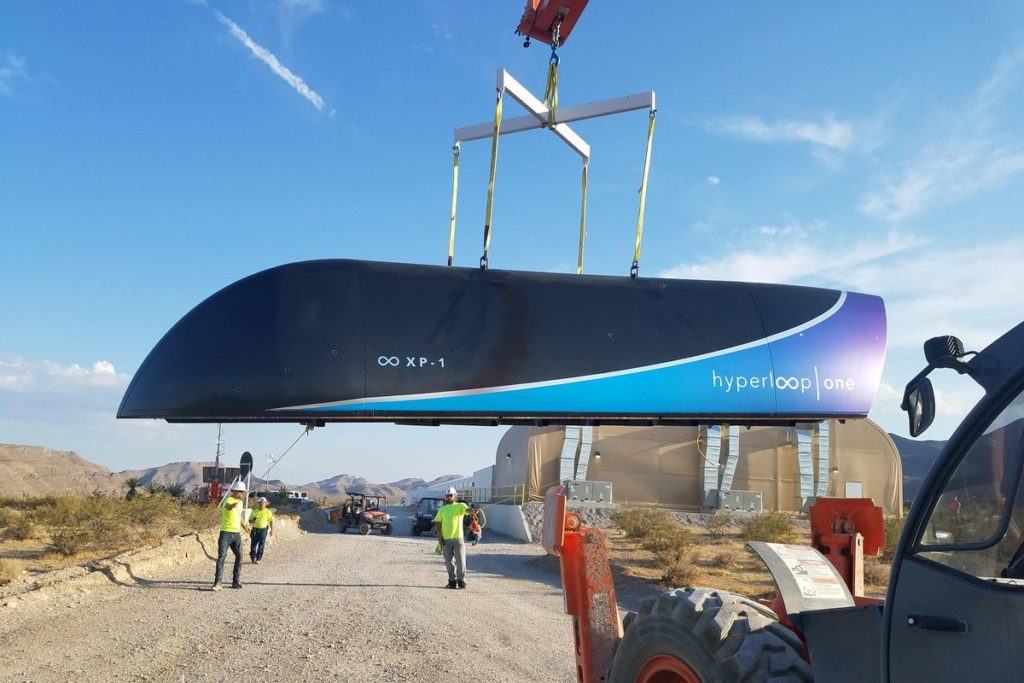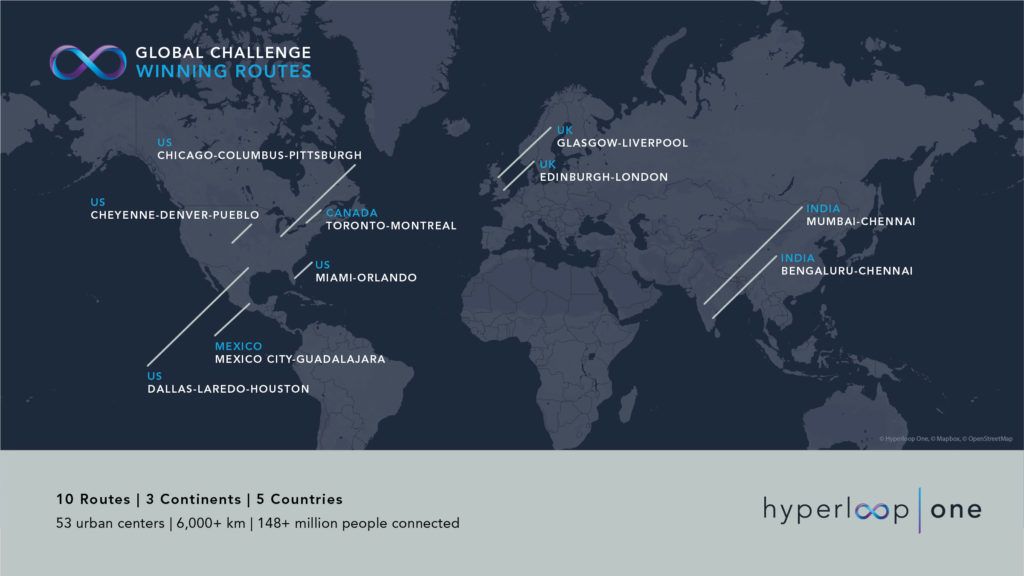Virgin Hyperloop One: Will Open Innovation Lead to Its Reality?

Virgin Hyperloop One leverages open innovation to push product development and commercial feasibility forward. But how sustainable is their approach?
Virgin Hyperloop One: Will Open Innovation Lead to Its Reality?
 (Hyperloop One’s new prototype design[1])
(Hyperloop One’s new prototype design[1])
With Virgin Hyperloop One’s announcement of its new CEO Jay Walker two days ago, the company’s dream of underground, ultra-high-speed transportation seems to be inching closer to reality. Walker, who brings experience running more traditional transportation providers including the New York MTA and Motivate, the BlueBike operator, sees his new role as an opportunity to integrate his experience with “the first really new and innovative transportation technology in over 100 years”[2]. What Walker is referring to is the Hyperloop, conceived in 2013 by Elon Musk as an alternate form of transportation in which pressurized tunnels transport pods of people or goods, enabled by the frictionless environment to travel at high speeds[3]. Indeed, one of Walker’s first tasks will be to distill the innovative work generated by the 10 winners of last year’s Hyperloop One Challenge, an open innovation contest that the company launched to crowdsource the most viable routes for the Hyperloop.
The company’s open innovation contest has accelerated the Hyperloop’s product development and commercial feasibility by tapping into players who not only bear the technological chops to improve the existing system, but also bring together local, public entities who are necessary partners for the Hyperloop’s ultimate implementation. Fashioned after board member Peter Diamandis’ X-Prize Foundation, The Challenge evaluated over 2,600 teams representing “individuals, universities, companies, and governments” who developed “proposals for deploying Hyperloop One’s innovative transportation technology in their region”[4]. The Challenge first filtered through thousands of proposals down to 35 semi-finalists; then 4 industry experts in the Challenge identified 10 finalists who bore the greatest potential in “well-defined routes, stakeholder involvement, and innovative ideas around implementation and application”[5]. A natural tool for sifting through thousands of possible route combinations, the Challenge helped Virgin Hyperloop One focus on the currently most viable routes in the world while also identifying an ecosystem of public agency partners up front, expediting the coordination between the players necessary for a Hyperloop to take form. Through the Global Challenge, the company secured its public-private partnership with a US state government, undertaking a feasibility study on a proposed route with the Colorado Department of Transportation and AECOM[6].
 (Hyperloop One finalists[7])
(Hyperloop One finalists[7])
Moving forward, Hyperloop One will work with the 10 finalists to provide “initial ridership forecasts, business case and preliminary technical analysis of the route and corridor, tailored to the needs of the individual route”[8]. Each team will have access to Hyperloop One’s business and technical leaders, who will host in-country workshops, as well as its global partner network, who can help “sharpen the feasibility and scope of the potential routes” [9]. The company also held its first ever Hyperloop One Global Summit, during which all winning teams and government and industry partners came together to start building their open platform[10].
The long-term goal remains to bring these 10 finalist routes to commercial fruition while building a knowledge platform about the Hyperloop. To fully integrate these open innovation ideas, Hyperloop management should consider bringing these finalist teams in-house or strike an intellectual property agreement so that they can continue to leverage the accumulated knowledge for future projects. In order to preserve a healthy exchange of ideas across the organization, Hyperloop may also consider re-aligning internal and external teams across specific work streams- for instance, route optimization, hardware improvements to the Hyperloop pod or tunnel, rather than having the finalist teams work in silos according to their route. The company can also continue crowdsourcing technological improvements, as Elon Musk has done with an annual SpaceX Pod competition [11]. Capturing best practices from the earliest public-private partnerships should also be a core component of the Hyperloop knowledge platform in order to replicate success across future routes.
As Walker tackles these challenges in his new role, two questions emerge:
- Should Walker fully absorb the finalist teams as employees of the Hyperloop organization?
- With the Hyperloop product now close to feasibility, will future open innovation projects return the same marginal benefit as the last Challenge? Should Virgin Hyperloop One continue to hold OI contests?
(Word Count: 792)
[1] Alissa Walker, “Hyperloop One reveals full-size prototype of its shiny new pod design”, Curbed Magazine, July 12 2017, https://www.curbed.com/2017/7/12/15960522/hyperloop-one-pod-design-test, accessed November 13 2018.
[2] Eillie Anzilotti. “Breaking: Virgin Hyperloop One names former MTA head Jay Walder as CEO,” Fast Company, November 8, 2018, https://www.fastcompany.com/90264850/virgin-hyperloop-one-names-former-mta-head-jay-walder-as-ceo, accessed November 12 2018.
[3] Elon Musk, “Hyperloop Alpha”, SpaceX, 2013, https://www.spacex.com/sites/spacex/files/hyperloop_alpha.pdf, accessed November 12 2018.
[4] “Hyperloop One announces 10 winners for Hyperloop One Global Challenge.” PRNewswire, September 14, 2017, https://www.prnewswire.com/news-releases/hyperloop-one-announces-10-winners-for-hyperloop-one-global-challenge-300519681.html, accessed November 12 2018.
[5] Rob Lloyd. “Open Innovation Lessons from Hyperloop One Global Challenge, (blog post), Virgin Hyperloop One, September 14, 2017, https://hyperloop-one.com/blog/power-open-innovation-lessons-hyperloop-one-global-challenge, accessed November 12 2018.
[6] Ibid. Accessed November 12 2018.
[7] Ibid. Accessed November 12 2018.
[8] “Hyperloop One announces 10 winners for Hyperloop One Global Challenge.” PRNewswire, September 14, 2017, https://www.prnewswire.com/news-releases/hyperloop-one-announces-10-winners-for-hyperloop-one-global-challenge-300519681.html, accessed November 12 2018.
[9] Ibid. Accessed November 12 2018.
[10] Rob Lloyd. “Open Innovation Lessons from Hyperloop One Global Challenge, (blog post), Virgin Hyperloop One, September 14, 2017, https://hyperloop-one.com/blog/power-open-innovation-lessons-hyperloop-one-global-challenge, accessed November 12 2018.
[11] Andrew Hawkins, “WARR Hyperloop pod hits 284 mph to win SpaceX competition,” The Verge, July 22 2018, https://www.theverge.com/2018/7/22/17601280/warr-hyperloop-pod-competition-spacex-elon-musk, accessed November 12 2018.



I still believe that future competitions by Hyperloop can produce the same level of marginal benefit, if not more, given that it’s a totally new technology. This first round of the competition is only looking at 10 markets across 4 countries. But if Hyperloop is to achieve it’s mission, it’s going to need to expand out of these initial markets into geographies that are significantly different, and additional open challenges like this one is one way to do it. There is also so much more than choosing geographies that could be tackled in a competition that is just as critical to the uptake and success of this new transportation modality – user experience, pricing, integration with local or traditional modalities.
Because this is all so new, there is so much to learn from innovators all over the world.
Totally agree here. While the Hyperloop technology is promising and exciting, there are still many open questions that impact the success of this technology. How does Hyperloop fit into the broader vision of the future of mobility and how do other technologies, such as autonomous vehicles, impact how Hyperloop may fit into the future?
I love the idea of holding prize contests to help solve critical tech milestones for an ambitious project like this. There’s always someone smarter you, and this method really leverages that truth to its fullest potential. A major challenge I can think of is misaligned incentives–unlike a government project that is trying to field a new piece of tech, multiple small agencies coming together to make a project like this happen are hindered by their individual interest to protect their own IP and profit as much as possible by its use. This portends a non-cooperative environment when contributors start being unwilling to give up their breakthroughs for an economically feasible cost.
It makes sense to me to bring in the best and brightest to work on difficult transportation problems, which is why I think Walker should bring in contest winners and participants full-time. That being said, I don’t think there is any reason why Hyperloop should run this experiment only once- there will certainly be additional engineering challenges along the way, and as a comment above attested, there is always someone smarter, more creative, more insightful into addressing these complicated transportation challenges. Bringing additional problem solvers on board can only help, given the not only difficult engineering challenges but the formidable government obstacles to be overcome to make this program a reality.
Thanks for the interesting read. I think the question of whether to bring the OI competition winners in-house or not depends very much on how qualified they are on the implementation of the project. Some people are great at ideas, others at execution. It might take a visionary to design a novel solution to the hyperloop problem, but it takes a careful engineer to build it. As for continuing to host OI competitions – I don’t see why not. I think there’s little downside to doing it.
Open innovation contests are a great way to ensure that creative and unique viewpoints are given appropriate consideration during the product development process. With regards to the Hyperloop One, specifically, the OI contest provided cities and universities with an opportunity to pitch routes in their area, which likely had the effect of increasing visibility of cities that otherwise may not have been considered. Additionally, by outsourcing much of the legwork to external parties, the Hyperloop One team is able to deploy members of the community as lobbyists on the project’s behalf, giving them the flexibility to hit the ground running if and when they decide to expand in any given market. This approach also has the potential of reducing the impact of the Hyperloop team’s biases (geographic or otherwise) by forcing the team to consider perspectives they have otherwise overlooked.
Virgin Hyperloop One’s approach to open innovation appears to have attracted significant interest and been a great method for outsourcing its product development. What most interests me is the intellectual property protections that the participants were offered (if any). Oftentimes, people are hesitant to participate in open innovation for fear that sharing their ideas without guarantees of protection could compromise them for the long-term. Being able to clearly articulate this to participants may help Hyperloop One attract even more contributors for future open innovation contents (should they choose to hold any).
Also, I do not see any downside to hiring the finalists if Hyperloop One believes they can be long-term contributors. In this sense, one can view open innovation as not only outsourcing product development but also as a hiring / talent acquisition tool, yet another application.